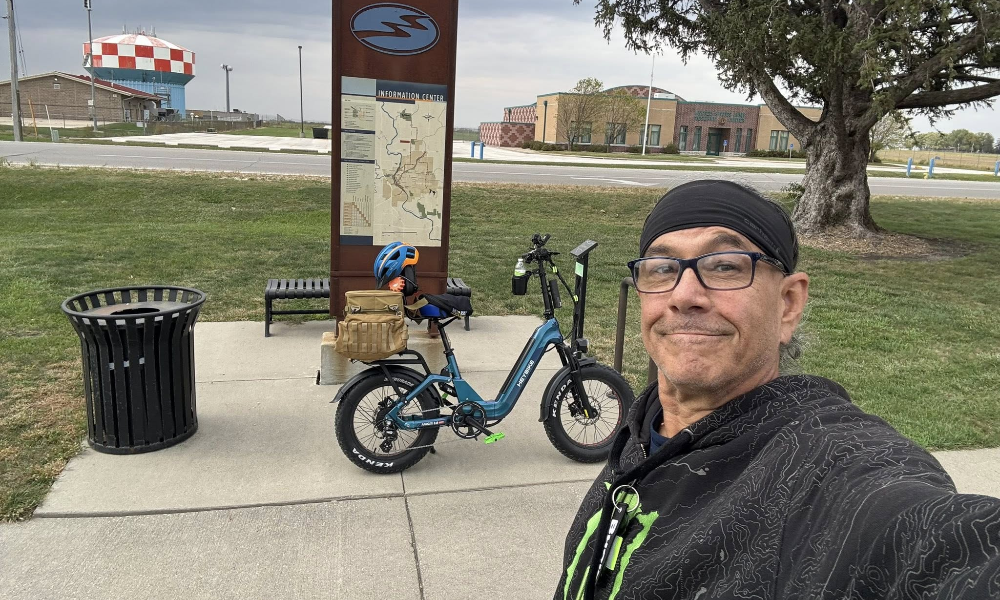No wonder, helmets reduce the risks associated with serious head injuries resulting from forceful impacts when riding a bike. So, whether you are riding a bicycle or an e-bike, it is wise to wear a helmet. Other than safety, wearing a helmet means you didn't violate the prevalent helmet laws by state.
Wearing a helmet makes sure that your face and head stay safe from major injuries in case you are faced with an accident. Besides, not many people are aware that it is mandatory to wear a helmet. Some people don't take helmet-wearing laws seriously until they are faced with consequences.
Bike helmet laws are a must for every state because they will reduce injuries and fatalities at large. And, several reports indicate that the number of serious head injuries from bike accidents has reduced drastically.
Because there is nothing called 'one-size-fits-all' bike helmet laws, every American state determines that. Let's learn more about helmet laws in the US in this post.

Bike helmet laws by state explained
Despite many studies that prove the importance of wearing helmets, US lawmakers are yet to pass a national law where wearing helmets are necessary. Helmets are protective gear and are only regulated by some states. Besides, some states require riders to wear helmets whereas some states don't have regulations.
In some states, the law requires children up to a certain age to wear helmets but doesn't require adults to wear the same. Therefore, you can find a mix of bike helmet laws by state in different regions. The following is a quick guide on the bike helmet laws by state along with other important things you should know.
1. State-Wide Helmet Laws
- The state helmet laws are a combination of twenty-two states including the District of Columbia. Also, included are about two hundred and two localities where riders have to wear helmets.
- Thirteen states don't require riders to wear a helmet. It means that they don't have local or state-wide helmet laws.
- Local laws and state laws vary depending on your age and where you live.
- Most bike helmet laws are targeted toward riders of eighteen years or even younger.
2. Local Government Helmet Laws
- Among the twenty-nine American states that don't have bicycle helmet laws state-wide, sixteen of them constitute individual localities. The localities include counties, cities, towns, etc. and they have separate ordinances in place locally.
- A few of the local ordinances may prohibit the riders both adults and young, from cycling without wearing a helmet.
- In certain states, local ordinances might exceed the limitations of state-wide laws. Suppose, New York prohibits cyclists under fourteen years from riding a bike without a helmet. But Greenburg and Rockland County have local laws that require all riders to wear helmets regardless of age.
Why are helmets mandatory in some states?
Not all American states have made bike helmet laws a necessity. Whereas, other states or cities have come up with their laws to protect the well-being of people. They have made the laws mandatory because of the benefits.
Bicycle helmet laws by state can prevent severe head injuries and can save lives. The studies mentioned above illustrate that as well. When it comes to the benefits regarding safety concerns when riding bikes, experts believe that the use of helmets will reduce the number of unfortunate events on the road.
In short, helmet use is recommended by several safety and health agencies in the US. Even the NHTSA recognized bike helmets as one of the best countermeasures that bring great results. The ebike helmet laws by state even protect both adults and children on the road.
Moreover, the Department of Disease Control and Prevention has supported wearing helmets as protective gear for both children and adult riders. By implementing bicycle helmet laws by state, the concerned authorities are doing a great job to keep their citizens safe.
How to choose the right bike helmet
Now that you are convinced about the importance of wearing a helmet when riding a bike or an e-bike, there are a few things to consider before buying one. Having a good-quality helmet will keep you safe on the road. Therefore, make sure that the helmet you want to buy comes with a CPSC certification. Helmets that include certification mean that they are tested for safety. Below-mentioned are some factors to consider.
Size
Finding out the size of your head is pretty easy. All you need is a soft measuring tape. Wrap the tape around your head. However, make sure that you hold the same right above your ears and eyebrows. The measuring tape should be at the same level, front to back. Also, you can check the sizing chart of the helmet brand to make sure that it will have the right fit.
Fit
Ensure that the helmet you want to buy has a comfortable fit around your head. There should not be a gap between your head and the foam. Keep in mind that the helmet isn't too tight. Not only will it be uncomfortable to wear but may cause headaches sometimes.
Position
After wearing the helmet, there should be a minimum space between your eyebrows and the helmet's brim. One to two fingers should be right. As such, you won't have a problem when seeing. At the back, the brim of your helmet should be high enough so that it doesn't touch your neck.
Adjustments
Helmets come with a fitting ring or removable pad that makes it easy for you to adjust. Besides, they come with straps that help secure the helmet around the head. Some helmets come with chin and side straps, too.
Conclusion
There is no denying that leaving safety to chance isn't the right thing to do when riding a bike or an electric bike. If you want to avoid life-threatening injuries, wearing a helmet should be your first line of defense. You may feel that a couple of rides around the block may not require wearing a helmet. But things can go worse within minutes. Know the bicycle helmet laws by state and promote health while prioritizing safety.



Share:
How to Choose the Right Ebike Conversion Kit
The Ultimate Guide to Bike Camera Mounts